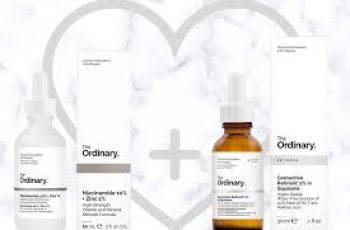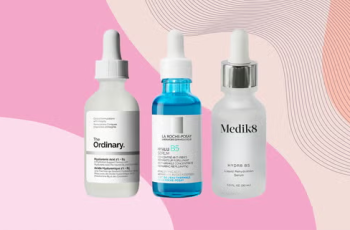
.webp)
.webp)
.webp)
Understanding Combination Skin: What It Is and How to Care for It
.webp)
.webp)
If you’ve ever been told you have combination skin, you might still be wondering what that actually means. That confusion is common—because combination skin isn’t technically a real skin type.
.webp)
.webp)
.webp)
The term “combination skin” has been around for decades, but it was never rooted in dermatological science. Instead, it was a marketing term coined to describe certain skin patterns.
.webp)
.webp)
Let’s break it all down clearly—what combination skin really is, how to tell which “type” you may have, and what to do about it.
.webp)
.webp)
.webp)
What Is Combination Skin?
.webp)
.webp)
Combination skin is often used to describe one of two situations:
.webp)
.webp)
.webp)
Skin that changes between dry and oily based on the environment
.webp)
.webp)
Skin that is oily in the T-zone but dry on the cheeks
.webp)
.webp)
.webp)
This term was first made popular by beauty brands like Helena Rubenstein and later Clinique. Dermatologists, however, prefer more accurate, measurable skin type classifications.
.webp)
.webp)
In dermatology, we use systems like the Baumann Skin Typing System, which looks at:
.webp)
.webp)
.webp)
Sebum (oil) production, Skin barrier health, Sensitivity, Pigmentation, And more…
.webp)
.webp)
The Two Main Types of Combination Skin
.webp)
.webp)
.webp)
Although not scientifically a skin type, “combination skin” falls into two practical categories based on your skin’s behavior:
.webp)
.webp)
1. Changing Skin Type
.webp)
.webp)
.webp)
Your skin may feel dry during winter and oily in the summer. This seasonal shift is common and caused by climate differences.
.webp)
.webp)
In low humidity or cold weather, your skin becomes dry due to moisture loss. In hot, humid conditions, it may produce excess oil.
.webp)
.webp)
.webp)
In the Baumann system, this person would be labeled dry in winter and oily in summer, not “combination.” So this is more accurately called a Changing Skin Type.
.webp)
.webp)
2. T-Zone Oiliness with Dry Cheeks
.webp)
.webp)
.webp)
In this situation, your T-zone (forehead, nose, chin) is oily, while your cheeks feel dry or tight.
.webp)
.webp)
This happens because the T-zone has more sebaceous glands (oil glands) than the rest of the face. When oil production is high in this zone but lacking on the cheeks, the skin feels unbalanced.
.webp)
.webp)
.webp)
Here, the key issue is an impaired skin barrier on the drier areas. While the oily T-zone protects itself naturally, your cheeks lose moisture more quickly.
.webp)
.webp)
Why Understanding This Matters
.webp)
.webp)
.webp)
It’s not enough to say “I have combination skin.” That doesn’t give your skin care provider or dermatologist enough information.
.webp)
.webp)
The real questions are:
.webp)
.webp)
.webp)
How much oil does your skin produce?
.webp)
.webp)
Is your skin barrier intact or damaged?
.webp)
.webp)
.webp)
Do you experience seasonal changes?
.webp)
.webp)
Is your skin sensitive, uneven, or acne-prone?
.webp)
.webp)
.webp)
The answers to these questions guide the correct routine—not just the label “combination skin.”
.webp)
.webp)
Sebum and Barrier Function: The Key to Skin Typing
.webp)
.webp)
.webp)
Here’s how dermatologists determine if your skin is dry or oily:
.webp)
.webp)
If your T-zone produces enough oil to coat the skin and protect it from water loss, it’s classified as Normal-Oily in the Baumann system.
.webp)
.webp)
.webp)
If your T-zone doesn’t make enough oil to hydrate your cheeks, your skin is considered Dry, even if parts of your face feel greasy.
.webp)
.webp)
Yes—it’s totally possible to have an oily T-zone but still have dry skin overall due to poor barrier function.
.webp)
.webp)
.webp)
Confusing? Absolutely. But Don’t Stress.
.webp)
.webp)
You don’t need to self-diagnose your exact skin type. That’s why tools like the Baumann Skin Type Quiz exist.
.webp)
.webp)
.webp)
It analyzes your oil production, hydration, sensitivity, and other traits to assign you a scientifically accurate skin type. That way, you avoid trial and error with products.
.webp)
.webp)
Product Selection Based on Your Combination Skin Type
.webp)
.webp)
Now that you understand the two types of “combination skin,” let’s look at how to choose the right products.
For Changing Combination Skin:
Use hydrating products and thicker moisturizers in the winter.
Switch to lighter, oil-controlling formulas in the summer.
Retake your skin type quiz when seasons change.
For T-Zone Oiliness:
Choose light moisturizers like gels or water-based creams.
Focus your oil-control products on the T-zone only.
Use humectants like hyaluronic acid to hydrate without heaviness.
Avoid rich, occlusive moisturizers that can worsen oily zones.
Why Are Cheeks Dry but T-Zone Oily?
This happens due to uneven sebaceous gland distribution on your face. The T-zone has more oil glands, so it’s better protected.
The cheeks have fewer oil glands and may have a weakened skin barrier, leading to water loss and dryness.
If your skin loses too much moisture, it feels tight or rough—even when you produce oil in other areas.
Still Not Sure If You’re Oily or Dry?
You might assume you have oily or combination skin because of a shiny T-zone, but that doesn’t mean your skin is balanced.
Dry skin types may still have a greasy T-zone if the oil isn’t spreading well or compensating for barrier damage.
Again, it comes back to how well your skin holds water, not just how oily you look.
How to Shop for Skin Care Products
Let’s break it down:
If You Have Changing Skin:
Winter: Use barrier-repair creams, ceramides, and rich moisturizers.
Summer: Switch to gel moisturizers, oil-free SPF, and balancing toners.
If You Have T-Zone Oiliness:
Look for non-comedogenic products.
Avoid pore-clogging oils and heavy creams.
Use dual-zone products or apply differently to different areas.
Always hydrate to prevent dryness-induced oil overproduction.
Product Selection Tip
Skincare products labeled for “combination skin” are often too generic. They may work okay, but not great.
You’re better off choosing seasonal products based on your current environment, skin barrier, and oil production.
In other words, treat the specific cause, not just the label.
Additional Factors to Consider in Your Routine
Every skin type has additional concerns. Ask yourself:
Is my skin sensitive?
Do I have acne, melasma, or rosacea?
Am I concerned about uneven skin tone or aging?
Combination skin care must address all of these factors, not just oil vs. dryness.
Best Moisturizers for Combination Skin
Here are general suggestions depending on your type:
Best for Changing Skin Type:
Winter: CeraVe Moisturizing Cream, First Aid Beauty Ultra Repair Cream
Summer: Neutrogena Hydro Boost, La Roche-Posay Effaclar Mat
Best for T-Zone Oiliness:
EltaMD AM Therapy Moisturizer
Clinique Dramatically Different Gel
Paula’s Choice Water-Infusing Electrolyte Moisturizer
Remember to adjust based on your region’s climate, and retest your skin type every 3–6 months.
Final Advice: Take the Skin Type Quiz
Instead of relying on marketing labels like “for combination skin,” take the guesswork out of your routine.
Take a skin type quiz based on the Baumann Skin Typing System
Match products to your current oil production and barrier health
Update your routine when seasons or your lifestyle change
The quiz provides a custom regimen built around the science of your skin—not myths.
Conclusion: Don’t Let the Term “Combination Skin” Confuse You
The term “combination skin” is outdated and vague. It often leads people to buy the wrong products or skip essential steps.
Instead, look at your:
Sebum levels, Skin barrier strength, Environmental triggers, Other skin concerns
Then, create a custom skincare routine that evolves with your skin.
Want help getting started? Take the quiz, and get your scientifically backed skin care plan today.



